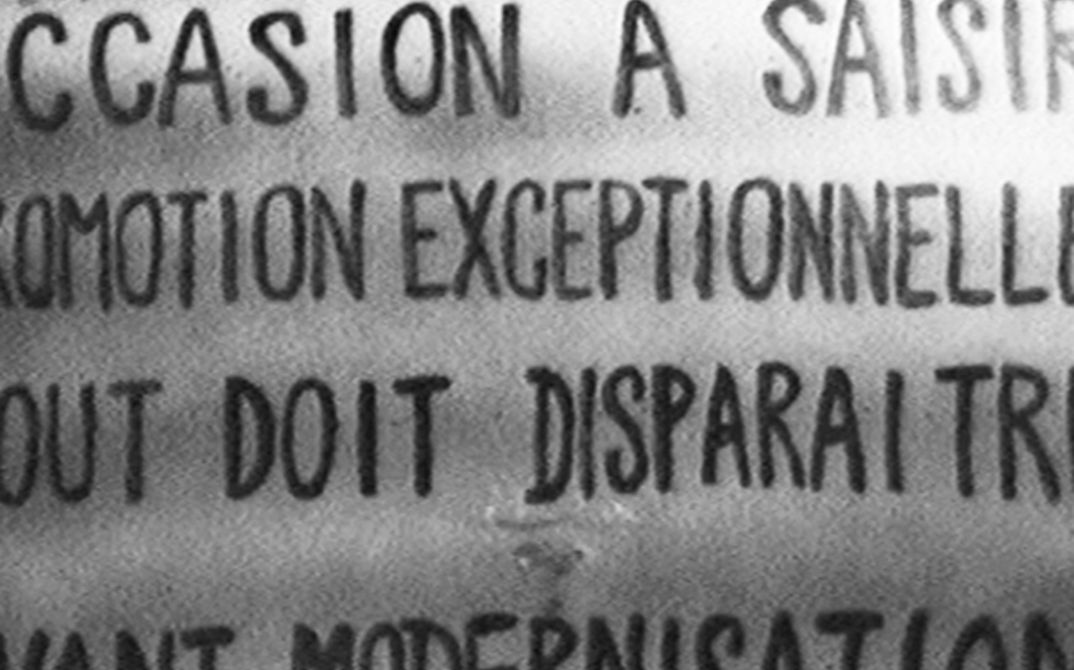55 min. French.
As the UN’s “International Year of the Woman” came to a close in 1975, French TV ran a programme called “The Year of the Woman: Thank God! It’s Over,” which assembled various questionable statements by French men to which the only female guest, then State Secretary for Women, Françoise Giroud, was supposed to respond. Maso et Miso vont en bateau is how the feminist video activists “Les Insoumuses” – Carole Roussopoulos, Delphine Seyrig, Nadja Ringart, and Ioana Wieder – responded to this evening: with fury and ample wit, they intervene from the editing table to expose not only the show, but also Giroud’s very office as being the farce of a patriarchal society. “No television image can represent us; we’ll tell our own stories with the help of video.”
Another of the collective’s works is S.C.U.M. Manifesto, which stages a reading of the eponymous 1967 work. As news images of male-dominated world events flicker across the television screen, Delphine Seyrig disseminates Valerie Solanas’s theses on men – who, according to the manifesto, are both biologically incomplete and driven by vagina envy. (Marie Kloos)
Carole Roussopoulos was born in Lausanne, Switzerland in 1945; she died in 2009. She studied in Lausanne and moved to Paris in 1967, where she founded the militant video collective “Video Out” with her future husband. In 1970, on the advice of her friend Jean Genet, she bought a portable video camera and shot her first film, Genet parle d’Angela Davis. In 1982, together with Delphine Seyrig and Ioana Wieder, she founded the Centre audiovisuel Simone de Beauvoir, the first archive for audiovisual works with a feminist emphasis. Her extensive filmography comprises more than one hundred works.
Delphine Seyrig was born in Beirut, Lebanon in 1932 and spent her childhood by turns in the Middle East and the United States. In 1952, she began an acting career in France. In 1956, she trained at the Actors Studio in New York. For her first film role, she acted in Robert Frank’s Pull My Daisy (USA, 1959); in the 1960s and 1970s, she acted in films by Alain Resnais, François Truffaut, Luis Buñuel, Jacques Demy, and Chantal Akerman. At the same time, Seyrig joined the women’s movement that formed in the aftermath of May ’68. In the early 1970s, in the milieu of Carole Roussopoulos, she discovered the possibilities of working with video; among other things, in 1976, she and Roussopoulos shot the feminist film S.C.U.M. Manifesto. Together with Ioana Wieder and Carole Roussopoulos, in 1982 she founded the Centre audiovisuel Simone de Beauvoir, and served as its president until her death in 1990.
Ioana Wieder was born in Bucharest, Romania. She and her family moved first to Palestine, then to Lebanon (where, at the age of seven, she got to know Delphine Seyrig) and finally to France, where she received the French citizenship in 1957. After an extended stay in the United States, in 1968 she returned to France, where she worked as a teacher and translator. In 1975, together with Carole Roussopoulos and Delphine Seyrig, she founded the collective Les Insoumuses and began making her own films. In 1982, together with Seyrig and Roussopoulos, she founded the Centre audiovisuel Simone de Beauvoir, and became its president in 1990 after the death of Delphine Seyrig.
Nadja Ringart was born in the vicinity of Paris in 1948. She works as a sociologist and as a director of militant films. She has been a member of the board of the Centre audiovisuel Simone de Beauvoir since its founding in 1982. She recently launched the platform Bobines feministes (editor's note: “Feminist Film Reels”), which provides online access to video material on the history of the French MLF (editor’s note: Mouvement de libération des femmes, an autonomous group within the French women’s movement, founded in 1970). Nadja Ringart is also co-organiser of the feminist documentary film festival Femmes en résistance, which takes place in Arcueil, France.
